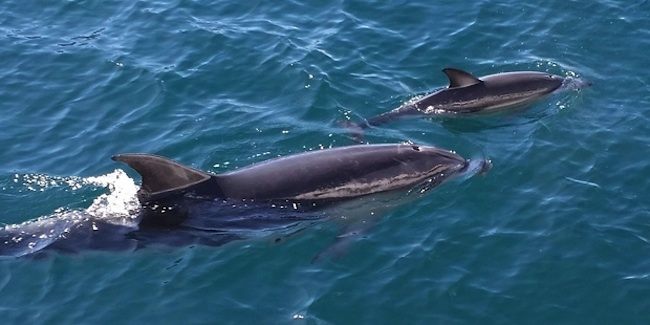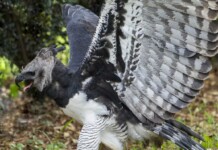
A new examination of dolphin vocalizations found that mother bottlenose dolphins whistle at a higher pitch when talking to their offspring, exactly like human mothers do with theirs.
While difficult to confirm in theory, a number of highlights from the study reveal the finding to be a robust one, including that the dolphins only used their “baby talk” voice with their calves, only in situations that weren’t stressful, and that human babies are known to prefer baby talk to adult speech.
The study was conducted off the Sarasota coast, Florida, with mother-calf pairings that were herded into a wide ocean-going enclosure. The animals were monitored to ensure they weren’t stressed or in poor health while the study commenced.
The researchers at the Sarasota Dolphin Research Program used spectrograms to study the contour and bandwidth of every call. Every dolphin has a unique whistle, and the spectrograms showed that the whistling directed at the calves had lower lows, and higher highs, just like the way humans tend to coo at their babies with whooping tones.
“It was very much like what human mothers do when they talk in a high-pitched voice to their infants,” Laela Sayigh, a biologist at the Woods Hole Oceanographic Institution and the study’s lead author, told Science News. “We have no idea of what they’re communicating, but likely, it’s, ‘I’m here. I’m here.’”
Sayigh’s reasoning is that the ocean is vast, and in a pod of dolphins, the whistles may be difficult to separate for the calf’s still-developing ears. The baby talk would make any mother’s whistle much more identifiable amid the racket.
MORE ANIMAL KINGDOM PARENTING: Size Doesn’t Matter to a Dolphin Mom As She Adopts a Whale Calf
Some scientists are seeing the study as a landmark: the touchstone of a future host of papers looking for baby speech in other animal vocalizations like parrots or primates.
In the video below, one can hear the recordings of their whistling slowed down. It first plays the call without calf, then the call with calf, then repeats this a second time.
LISTEN and hear for yourself…
SHARE This Touching Animal Fact With Your Friends…



















